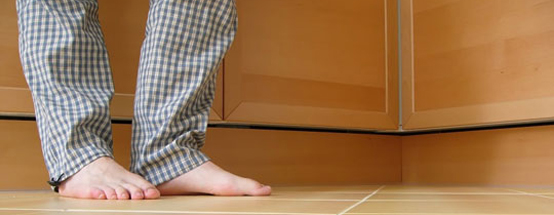
(photo courtesy of Apartment Therapy)
Written by Gerard Del Monte, FabCab Client Representative
At the recent Seattle Home Show, we were frequently asked about our suggestions for the best ways to heat or cool a FabCab. Fortunately, due to the inherent energy efficiency in every FabCab design, there are several answers that are also applicable to standard home designs.
There are two factors that control your comfort and energy efficiency: insulation and infiltration. The structural insulated panels (SIPs) used in FabCab walls and roofs ensure that there is an uninterrupted thermal shell that is extremely airtight. Consequently, it doesn’t take much energy to either heat or cool a FabCab.
One popular traditional heating option is the radiant floor. Typically, this involves an insulated concrete slab with polyethylene pipe in it. Run warm water through the pipes to gently heat your floor, and you and your family enjoy toasty toes. There are also ways of doing a radiant floor with a typical wooden floor system (as used over a crawl space or basement). Another possible hot water heating system uses thin Euro-style radiators. These are fairly unobtrusive, and like a radiant floor can be fired off with a glorified hot water tank.
Depending on where your FabCab is located, you may also need cooling as well. Ductless heat pumps are a tidy solution. Due to an open floor plan design, no ductwork is needed. Depending on the size of your home, units are tucked away under a beam and serve to efficiently heat and cool your space. The outside units that FabCab specifies are very small, about the size of a classic suitcase. The inside units are quiet and barely thicker than one of our typical beams.
A FabCab home can be used for various solar applications as well. Our window wall, when facing within 20 degrees of either side of true south on the compass, provides natural passive solar heating. The thermal mass of the timberframe helps store BTUs, which moderates the swings of indoor temperature making your home less expensive to heat and more comfortable. This is especially so when you have a concrete floor, adding to the thermal mass.
Shed roofs are also ideal for mounting solar panels, either for hot water (flat panels, or vacuum tubes) or electricity (solar photovoltaics). There are generous government incentives for installing solar systems in your home, making them even more desirable, as well as being environmentally responsible.
There are many answers, and we can help you decide which is best for you and your family.
